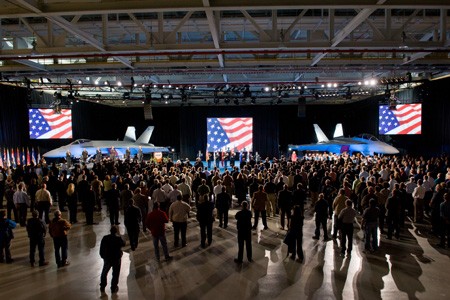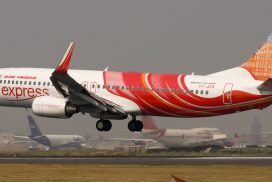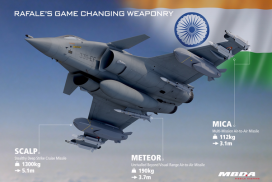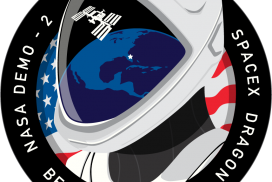 20 April: It was a special day at St. Louis, Missouri for Boeing and U.S. Navy where they celebrated a mile stone delivery of 500 F/A-18E/F Super Hornets and derivative EA-18G Growlers. All of these aircrafts have joined the Navy’s tactical aircraft fleet.
20 April: It was a special day at St. Louis, Missouri for Boeing and U.S. Navy where they celebrated a mile stone delivery of 500 F/A-18E/F Super Hornets and derivative EA-18G Growlers. All of these aircrafts have joined the Navy’s tactical aircraft fleet.
As the Navy’s frontline strike fighter the Super Hornet Block II deploy leading-edge technology and multirole strike capability around the globe. The EA-18G is now the premier airborne electronic attack platform in the Navy’s arsenal and the United States’ newest tactical aircraft. EA-18G is a carrier-based electronic warfare aircraft, a specialized version of the two-seat F/A-18F Super Hornet. The EA-18G will replace the Northrop Grumman EA-6B Prowlers in service with the United States Navy. EA-18A will enhance the ability to block enemy radar and electronic systems.
Boeing has delivered every F/A-18E/F and EA-18G to the U.S. Navy on budget and ahead of schedule. F/A-18 and EA-18 Programs Vice President Kory Mathews said at the ceremony: “The Super Hornet and Growler, both combat-deployed, have continuously increased capability for the war fighter while reducing cost for the Navy and the taxpayer”
Capt. Mark Darrah, F/A-18 and EA-18G program manager (PMA-265) was quoted saying that the day was another significant milestone for a program that has by any measure exceeded expectations for cost, schedule and performance. The PMA-265/Hornet Industry Team has consistently delivered capable and reliable aircraft to our fleet customer.
The EA-18G was first used in combat during Operation Odyssey Dawn by supporting efforts to enforce a UN no-fly-zone over Libya. The five EA-18Gs were redeployed from Iraq to Italy to support Libya operations. The F/A-18E/F and EA-18G will continue to operate from U.S. Navy aircraft carriers through 2035 and beyond, with the flexibility to seamlessly operate from land-based airfields. The Navy’s submission for the 2011 defense budget put forth by the Obama Administration calls for the addition of four EA-18G Growler squadrons to be added to the fleet.
As said by Mathews these aircrafts were designed with extensive growth capacity, enabling evolutionary technology to be added throughout the life of the aircraft to expand capabilities and remain well ahead of changing threats.
The Boeing F/A-18E/F Super Hornet is a twin-engine carrier-based multirole fighter aircraft able to perform virtually every mission in the tactical spectrum, including air superiority, day/night strike with precision-guided weapons, fighter escort, close air support, suppression of enemy air defenses, maritime strike, reconnaissance, forward air control and tanker missions. The Super Hornet has an internal 20 mm gun and can carry air-to-air missiles and air-to-surface weapons. Additional fuel can be carried with up to five external fuel tanks and the aircraft can be configured as an airborne tanker by adding an external air refueling system. The Super Hornet Block II achieved Initial Operational Capability in 2007.
Boeing is on contract to deliver 24 two-seat F/A-18F Super Hornets to the Royal Australian Air Force. The Super Hornet also is a competitor in ongoing fighter competitions in Brazil, India, Malaysia and Japan. F/A-18F is a competitor for India’s Medium Multi-Role Combat Aircraft (MRCA) competition. Boeing submitted a proposal for MMRCA competition on 24 April 2008. The Super Hornet variant being offered to India is named F/A-18IN.
The EA-18G Growler is an electronic attack version of the F/A-18F. The Growler’s flight performance is similar to that of the F/A-18E/F. This attribute enables the Growler to perform escort jamming as well as the traditional standoff jamming mission. Growlers will be able to accompany F/A-18s during all phases of an attack mission. EA-18G Growler is the only air combat platform that delivers full-spectrum airborne electronic attack (AEA) capability along with the targeting and self-defense capabilities derived from the Block II Super Hornet. The EA-18G’s highly flexible design enables war fighters to operate either from the deck of an aircraft carrier or from land-based airfields. It is replacing the Navy’s current AEA platform, the EA-6B Prowler, which has been in service since 1971. The EA-18G joined the Navy’s aircraft fleet in 2008, when it was introduced to fleet training squadron VAQ-129. The EA-18G achieved Initial Operational Capability in 2009.



